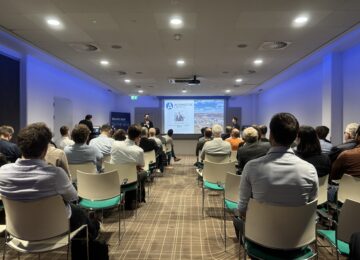'High time for subsidy on storage systems'
The cry for help of grid operator Liander towards the government to phase out net-metering as soon as possible and fully commit to subsidizing storage systems has probably not escaped anyone's notice. The grid operator can barely handle the influx of solar power in large parts of the country.
Liander, together with the other operators, is investing 40 billion euros in converting the power network. They are facing a severe shortage of technicians, so they prefer to deploy these scarce technicians on essential parts of the network.
Does The Hague already know?
By now everyone seems to have realized that we cannot get rid of the growth of renewable energy on the grid. We will have to explore other avenues, and the most obvious one is energy storage. But has this caught on in The Hague?
Maarten van den Heuvel and his colleagues see the potential for that. The brand new president of Energy Storage Netherlands (ESNL) started his position at the beginning of this year and has a personal mission: to leave the world a better place than it was when he came into it 55 years ago. ESNL aims to connect companies, knowledge institutions, governments and financiers to create sustainable business cases for energy storage that contribute to a successful transition to clean, reliable and affordable energy.
Van den Heuvel: "Buffering or storage systems are nothing new. You can hardly name a process where smart buffers are not used to keep a production process running smoothly. Take industry: everywhere and at every machine you have intermediate stocks so that no bottlenecks are created in the process. And at home, the central heating boiler has an expansion vessel: also a buffer. So storage is already all around us."
'Solve network congestion with storage systems'
Before, we had a very constant energy supply. That is different with renewables. Those have to be matched in terms of supply and demand. Network congestion is becoming really critical right now and there are many times of peak load. These problems could be solved with storage systems.
In the countries around us, batteries are already in full use. Germany is leading the way and in Belgium, too, the purchase of home batteries is now taking off. Van den Heuvel: "The Netherlands is lagging behind internationally. In the new coalition agreement we must ensure that energy storage is stimulated. This can be done through subsidies or by adjusting transport tariffs. By now it is clear that grid reinforcement alone is not a viable option."
Subsidy, flexible grid tariffs and updated laws and regulations
"If we want to scale up with renewable energy now, either our grid has to become suitable for that or we have to put much more effort into storage. That's what we want to discuss with politicians. We also want to push for flexible grid tariffs and the laws and regulations must be adjusted. Energy storage is still too often not seen as a generator, but only as a consumer. That means that the consumer pays the full transmission tariff, whether he is charging or discharging," Van den Heuvel explains.
Adapting the laws and regulations will be quite a job. Just think about how a storage system may be connected to the grid and how to deal with lithium-ion batteries in a residential area. ESNL is participating in the formation of these regulations and providing expertise in the various working groups.
'We are more than ready'
But isn't this going to take far too long? Van den Heuvel: "I am positive about it. With the new climate agreement and the new people in the cabinet, I really expect more speed. ESNL has been around for about six years now. We now know the inputs and we are on top of things."
He concludes, "I feel we are at a tipping point. Network congestion is real and we can't add weight any faster. Buffering is more economical and goes much faster. We also expect that putting storage systems in place today will be better accepted by society and have much less impact than opening up the streets. There is work to be done and we are more than ready."
(Source: Solar365)





